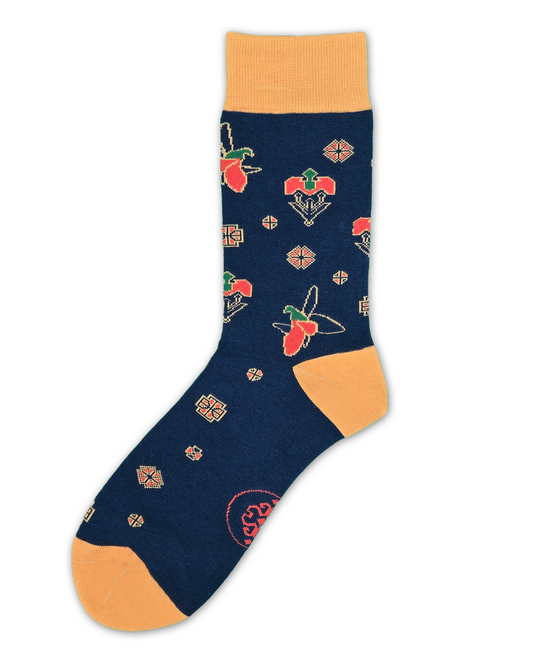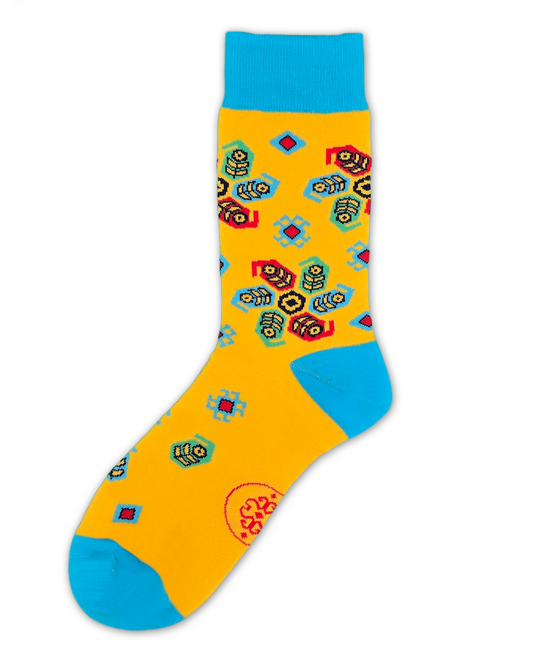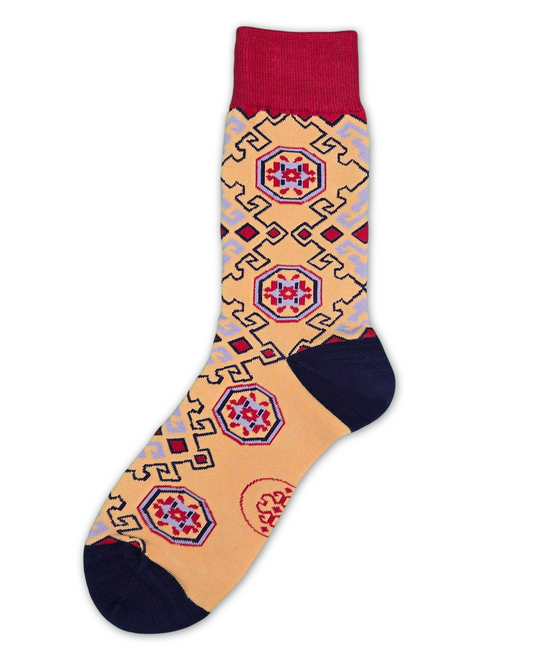
Choosing the Right Socks - Why Quality Matters
Share
How to Choose Quality Socks
In our previous post, we explored why socks deserve more attention in your wardrobe. This time, we're diving deeper into what makes a quality sock truly worth wearing.
From better comfort and durability to elevated style, the right socks can transform how you feel and look. But with so many options, how do you know you're picking the right pair? The answer lies in fabric, construction, and composition.

Why Quality Socks Make a Difference
Even the boldest patterns and latest trends can’t compensate for poor quality. Cheap, synthetic socks may look good at first glance, but they quickly wear out, lose shape, and cause discomfort. Choosing high-quality socks ensures:
- Better breathability and comfort
- Longer lifespan
- Enhanced appearance
- Foot health and moisture control
In short, quality is the foundation of great apparel, and socks are no exception. Without quality, even the most stylish design will fall flat.
How to Identify Quality Socks: What to Look For
Here are some key features and tips to help you confidently choose high-quality socks:
1. Fabric Composition
Start by checking the label. Quality socks often contain at least 70% natural fibres. Some examples are:
- Cotton: Soft, breathable, and hypoallergenic
- Wool: Regulates temperature, ideal for colder seasons
- Bamboo: Naturally antibacterial and moisture-wicking
A small amount (under 30%) of synthetic fibres like polyester, nylon, or spandex is acceptable and even beneficial for:
- Durability
- Elasticity
- Shape retention

Pro tip: Avoid socks made from 100% synthetic material for daily wear — while synthetic blends help in sportswear, fully synthetic socks can trap heat, lead to sweating, and cause discomfort.
But don’t swing to the other extreme either — 100% natural fibres (like pure cotton) may feel soft at first, but tend to lose shape quickly and wear out faster without reinforcement. The right blend brings out the best in both.
2. Reinforced Heel and Toe
These areas take the most stress. Look for:
- Slightly thicker fabric or visible reinforcement
- Padding or denser stitching for extra durability
3. Comfortable Elasticity
Good socks:
- Stay up without cutting into your skin
- Don't leave marks
- Offer a snug but comfortable fit
Avoid socks that feel too tight or slide down easily.

4. Soft Yet Durable Feel
A high-quality sock will:
- Feel pleasant against your skin
- Retain shape after washing
- Withstand regular use without thinning or sagging
5. Tight, Even Stitching
When it comes to identifying well-made socks, here's what sets high-quality socks apart:
- Smooth, flat seams that won’t rub or irritate your skin
- Even tight stitching that holds the sock’s shape through daily wear
- No loose threads or gaps in tension — unless you’re inspecting the inside of a jacquard-knit sock (we’ll explain why that’s an exception below)
Good stitching matters. It’s what helps socks stay snug without sagging, prevents holes from forming prematurely, and keeps the fabric breathable and supportive.
What the Inside Threads Really Mean: The Case for Jacquard Knit Socks
If you’ve ever turned a patterned sock inside out and found a web of colourful threads crisscrossing the interior, you might have assumed something went wrong in production. In fact, those interior floats are a hallmark of jacquard knitting, a premium sock-making technique used to create detailed, long-lasting patterns.

Unlike socks with printed designs — where the image can crack, fade, or peel over time — jacquard socks are knit from dyed yarns, with the pattern built directly into the fabric. This makes them more durable, resistant to wear, and visually rich.
The floating threads you see inside are called yarn floats, and they’re part of the process. They connect different coloured yarns across the back of the fabric as the pattern is formed. While they may look like imperfections, they’re actually a sign of a more complex and high-quality construction method.
In fact, jacquard-knit socks offer distinct advantages:
- Style – dimensional, expressive patterns that don’t fade
- Craftsmanship – a knit design that’s part of the fabric, not printed on top
- Comfort & Durability – strong enough for everyday wear, soft enough for all-day comfort
- Authenticity – a textured interior that reflects real craftsmanship
So if you notice those inside threads? Take it as a good sign. You’re likely holding a pair of high-quality jacquard socks — built to last, designed to impress, and crafted for comfort.
Final Thought
Investing in high-quality socks means more than just buying a stylish accessory—it’s about comfort, longevity, and expressing care in how you dress. By focusing on fabric, stitching, and fit, you'll make smarter purchases that feel great and last longer.















